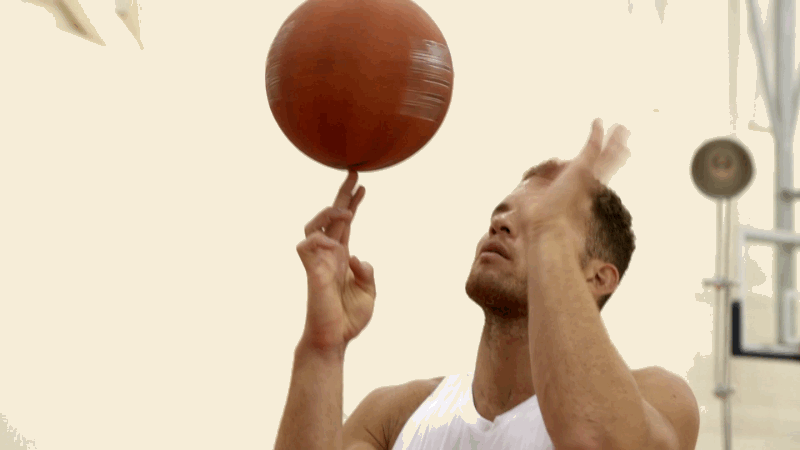It does produce nice spins.
You are using an out of date browser. It may not display this or other websites correctly.
You should upgrade or use an alternative browser.
You should upgrade or use an alternative browser.
Physics 101. Rough strings can't give you more spin.
- Thread starter TimeToPlaySets
- Start date
NawImNate
Rookie
The racket brushes upwards.
The ball's rotation stops and reverses.
Spin is created when the ball rotates at the same rate as the racket head.
After that, they are spinning the same speed.
Rough strings simply reverse the balls spin sooner, but can not increase the rate of spin.
The ball simply can never spin FASTER than the object imparting the spin in the first place.
But, don't take it from me, take it from
Howard Brody is an emeritus professor of physics at the University of Pennsylvania
Rod Cross is an associate professor in physics at the University of Sydney, Australia
https://www.amazon.com/Technical-Tennis-Racquets-Strings-Courts/dp/0972275932
No. Sentence 3 doesnt make physical sense. So also you are telling me that if I hit with a force that causes more friction that the RPMS WILL BE THE SAME? No it will not. I dont care about your sources this is false. Its common sense.
BallsOfFire
Rookie
The reason the roughed/dented/uneven string results in more spin, is because the energy to the ball is re-transfered over less string surface in a skitting bumped fashion. The uneven strings flips/flick on the ball like this basket baller on the rubber ball before release.Again, use your common sense.
It is physically impossible for a rough string to add spin.
Do you think the ball would spin faster if he wore a gardening glove?

The guy uses his fingertips/fingernails to transfer energy to the ball. A garden glove would make that transfer of same applied energy less sharp, more smoorth and thus make it harder to make it spin. So I guess you defeated your own arguments with this GIF. His fingers work on the ball like a rough string would.
Last edited:
ChanterRacquet
Professional
Not being around the forum when this was first posted, and not about to read through the thread, I’d say it makes sense that racquet head speed sets a limit to how much spin can be imparted. But then it’s up to the string to actually grab the ball. The rougher the string the more able you are to approach that limit set by your racquet head speed.The racket brushes upwards.
The ball's rotation stops and reverses.
Spin is created when the ball rotates at the same rate as the racket head.
After that, they are spinning the same speed.
Rough strings simply reverse the balls spin sooner, but can not increase the rate of spin.
The ball simply can never spin FASTER than the object imparting the spin in the first place.
But, don't take it from me, take it from
Howard Brody is an emeritus professor of physics at the University of Pennsylvania
Rod Cross is an associate professor in physics at the University of Sydney, Australia
https://www.amazon.com/Technical-Tennis-Racquets-Strings-Courts/dp/0972275932
BallsOfFire
Rookie
It's mostly the angle of the racket head at impact vs the angle of the ball coming in that determines spin. The rougness has softenend up most strings and provides some more elastic flex than its non-roughed brothers.....The roughness gives better traction/grab on the rubber ball. so the roughed strings catches better the ball... and that helps a tiny little bit with trajectory and spin because the roughed versions are better at stopping the incoming spin thus giving more time to re-spin going out the stringbed....The shaped versions bite more into the ball thus provides the spin better after the stringbed has stopped the ball going in.Not being around the forum when this was first posted, and not about to read through the thread, I’d say it makes sense that racquet head speed sets a limit to how much spin can be imparted. But then it’s up to the string to actually grab the ball. The rougher the string the more able you are to approach that limit set by your racquet head speed.
It's easier to flip a coin at fingertips/nails than using the palm of hand, but easier to stop a coin flipping in the air with the palm of hand than the fingertips....
Roughed strings = more surface (palms) good at catching.....shaped strings less surface (fingertips) good at flipping.
Last edited:
There's a lot of factors and it kind of depends on how you define the problem. At slower swing speeds rough strings produce a noticeable difference for me. It's definitely easier for me to pick up a slow moving ball near the net and spin it back over at a close angle to the net with shaped poly than with a synthetic gut for instance. When hitting full pace ground strokes however, there isn't much of a noticeable difference in spin with the synthetic gut.
So if you framed the problem as max spin possible between rough poly and smooth poly then maybe there isn't a substantial difference there. But if you took the average rpms over a full match between rough and smooth, I would be very surprised if rough didn't win easily.
So if you framed the problem as max spin possible between rough poly and smooth poly then maybe there isn't a substantial difference there. But if you took the average rpms over a full match between rough and smooth, I would be very surprised if rough didn't win easily.
